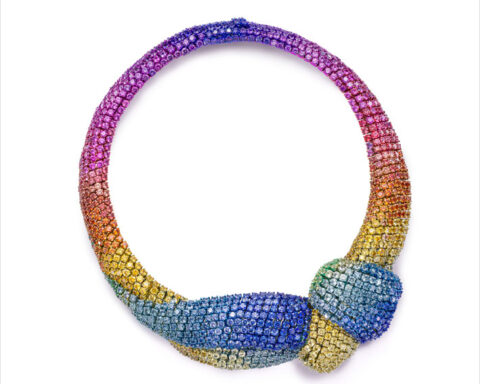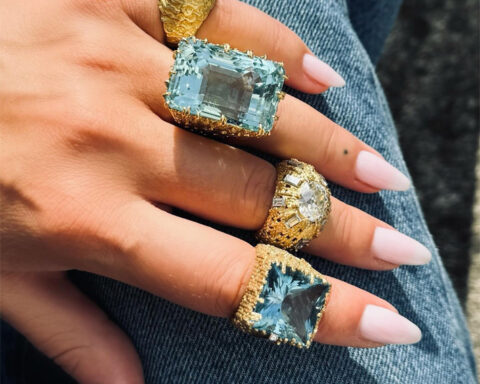Piaget renews its historic Possession collection with jewelry that plays on the design of the circle.
A new chapter opens in the history of Piaget’s Possession collection. Introduced in 1990, this collection presents itself as elegant jewelry yet suitable for everyday occasions. Its defining feature, from the very beginning, has been its rotating and interactive elements: circles that can be moved and become a toy for the fingers, but also its closeness to the concept of jewelry as an amulet. Over time, the Possession collection has undergone modifications and new goldsmith techniques, such as setting (with diamonds or a tie-and-dye technique of colored stones to create a precious and unique rainbow). Or the now iconic Decor Palace motif, first introduced in 1961 and inspired by guilloché engraving in watchmaking. It is an intricate hand-engraved texture that transforms gold into a detailed canvas. Each line bears the signature of the artisan who created it.

In 2025, Decor Palace continues to take center stage, with a new interpretation of the jewelry, this time characterized by a round and flat aesthetic. This also alludes to Piaget’s watchmaking roots. Available in small, medium, and large sizes, the new creations include two smaller pendants, engraved with the Decor Palace logo in rose or white gold, each set with a brilliant-cut diamond nestled between sculptural brackets and paired with matching bracelets. The medium pendants feature contrasts, mirror-polished gold or diamonds paired with Decor Palace textures, enhanced by a diamond ring. A larger pendant, embellished with additional diamonds and a palm-link chain, amplifies its refinement.

Rose gold earrings embellished with diamonds and Decor Palace details complete the collection, lending a soothing touch to the body. At the heart of the new pieces is the centerpiece: a talisman necklace embodying Piaget’s Extraleganza spirit, featuring 8 carats of diamonds set in an intricate composition of handcrafted medallions, refined in a play of shapes and links. This philosophy has characterized Piaget since 1874 and continues to define the legacy of the Maison, known as the House of Gold since the late 1950s.














